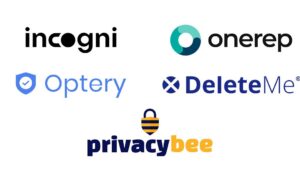If you are from a low-income household, then you have access to different types of financial assistance programs. These programs can help you become self-sufficient and alleviate economic hardships. These financial aid programs are initiated by the government, state, and local organisations, with the objective of offering essential assistance to families in relation to healthcare, housing, food security, and income supplementation. Thus, this comprehensive guide highlights the key assistance programs accessible to low-income families. This will offer you a roadmap of the available resources providing financial help for the needy.
Supplemental Nutrition Assistance Program (SNAP)
Initially known as the Food Stamp Program, SNAP is a government initiative that promises to provide low-income families and individuals with sufficient support needed to purchase nutritious food. The benefits of this program are disbursed every month through an Electronic Benefits Transfer card (EBT), which can be utilised only at authorised retail food stores.
The eligibility of this program primarily lies in the number of dependants in the household, expenses, and total earnings. A report presents that as of 2018, about 40 million Americans benefited from SNAP, highlighting the vital role it played in offering financial support for troubled ones.
Temporary Assistance for Needy Families (TANF)
TANF is also a government and state-funded assistance program providing temporary financial relief to low-income households with children. The main objective of this program is to lower out-of-wedlock pregnancies, promote job preparation and work, and also to motivate the idea and maintenance of two-parent families.
Eligible people can avail themselves of TANF benefits to secure essential needs like childcare, housing, and food. While the program presents a decentralised structure, the benefits and eligibility criteria may differ by state.
Earned Income Tax Credit (EITC)
The EITC is a type of refundable tax credit program designed to amplify the income of low-to-moderate-income families, especially those with children. But remember that the credit amount differs based on the worker’s income, number of qualifying children, and filing status.
A report states that in 2013 alone, EITC provided around $56 billion in assistance to an estimated 27 million families, efficiently pulling 5.4 million people above the poverty line. This number underscores the role of the program in offering financial help for needy, inducing employment and minimising tax burdens simultaneously.
Housing Assistance Programs
One of the foundational elements of economic security is stable housing. This is why low-income households can benefit from several programs to secure affordable housing.
- Section 8 Housing Choice Voucher Program: This is a federal program offering housing vouchers to low-income households, enabling them to rent privately owned housing. Subject to the program protocols, participants usually have to contribute at least 30% of their adjusted gross income to pay the rent, while the remainder can be covered using the voucher.
- Public housing: Administered by the local public housing organisations, this program provides rental housing facilities to qualified low-income families, disabled individuals, and older adults. To ensure that the benefit is affordable for the residents, the rent margin is dependent on their income.
- State and local programs: States and municipalities provide additional housing assistance programs, covering eviction prevention, rental assistance, and affordable housing development initiatives. The participant’s eligibility and availability for housing differ by location.
Healthcare assistance
Quick accessibility to healthcare services is everyone’s right, but certain factors make it hard to access those. That is why another critical element of financial stability is the benefit of healthcare accessibility. There are several programs offering healthcare assistance to those in need:
- Medicaid: This is a collaborative initiative of both federal and state programs, providing free-of-cost or low-cost medical coverage to eligible low-income households or individuals. The eligibility for this support program varies by state but commonly accounts for household size, income, and other affecting factors.
- Affordable Care Act (ACA) marketplace subsidies: This program provides financial aid to help low—and moderate-income households and individuals afford health insurance purchased through the Health Insurance Marketplace. The subsidy benefits are determined based on family size and income.
- Children’s Health Insurance Program (CHIP): This program is designed for families with children whose income exceeds the criteria for Medicaid but is also low enough to purchase a private insurance plan. Thus, this financial help for the needy allows for low-cost health coverage.
Utility assistance programs
Utility assistance programs are there to help households maintain access to utility services efficiently.
- Lifeline program: This is a government initiative offering phone and internet services at discounted plans to eligible low-income consumers, ensuring their access to essential communication services.
- Low Income Home Energy Assistance Program (LIHEAP): As a federal support program, LIHEAP offers financial help for the needy to cover home cooling and heating energy expenses, in addition to energy crisis assistance, bill payment assistance, energy-related home repairs, and weatherisation.
Educational support
One’s education dramatically influences economic mobility. Considering this, there are support programs to assist low-income students in pursuing higher education.
- Federal Pell Grants: It is a program that offers need-based grants to undergraduate students from low-income households to foster access to postsecondary education. As compared to direct student loans, there’s no need to repay the assistance from Pell Grants.
- Head Start and Early Head Start: This is another government-initiated program that promotes the readiness of the school for children from birth till the age of five in low-income households via nutritional health, educational and social services.
Tax preparation assistance
The process of filing taxes is not only costly but also complex. But, with the help of several support programs, eligible individuals can avail free assistance:
- Free File Program: This program is a partnership between private tax software providers and the IRS that empowers eligible taxpayers to file government taxes through online mode at zero cost.
- Tax Counselling for the Elderly (TCE) offers free tax assistance to senior citizens, typically aged 60 and above. It emphasises retirement and pension-related tax issues.
- Volunteer Income Tax Assistance (VITA): This support program provides free tax preparation services to eligible individuals with an annual income of $60,000 or less. Individuals with disabilities and those with restricted English proficiency can also avail of this benefit. You will get assistance from certified volunteers with your tax filing to warrant that you receive due credits and refunds.
Closure
Ultimately, these financial support programs are a relief for low-income families and individuals in meeting their essential needs, such as education, healthcare, food, housing, energy services, and other essential utility needs. Through these programs, people can obtain financial stability with more manageable expenses and enhanced quality of life.

































